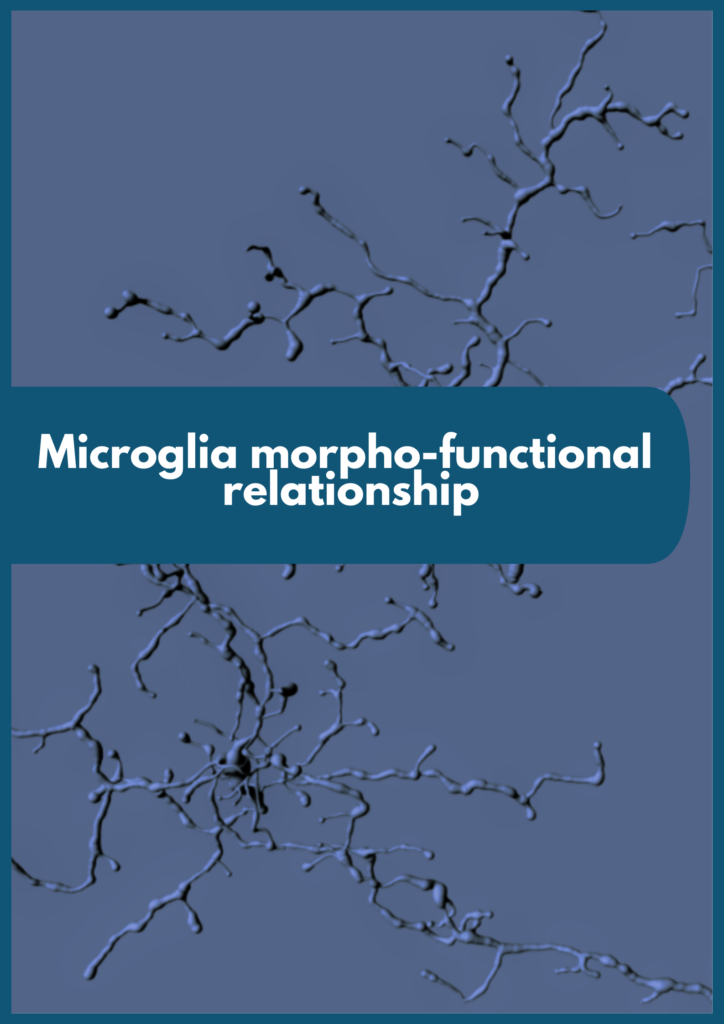
Last updated: Oct 2024
Microglia morpho-functional relationship
Cells are typically grouped into classes and types based on assumed shared features like morphology, physiological properties, and/or transcriptional states. Microglia are not excluded from this structure-to-function assumption: A branched microglial morphology is commonly associated with a surveilling function in a healthy environment, whereas reactive microglia retract their processes towards an amoeboid-like shape, typically observed under disease conditions. Extensive transcriptional profiling of microglia across development and disease progression suggests they form “signature clusters”. Still, no defined transcriptional signature to a distinct function beyond a disease cluster has been observed. This suggests that microglia are either just heterogeneous by nature or that methodological limitations have prevented further insights.
Advancing Methodology
When we attempted to classify microglia morphology beyond extreme conditions, we realized the suboptimal performance of current strategies: They are inefficient in dealing with the dynamic nature of microglial processes that introduce morphological variability, and the data suffers severe information loss while reducing morphological complexity.
This paper introduces the development of a multifaceted, interdisciplinary strategy named morphOMICs to resolve differences in microglia morphology based on brain region, sex, developmental stage, and disease progression. Alongside, we generated reference maps to assess microglia adaptations across various cue-dependent signals, guiding hypothesis-driven approaches.
Also check out the commentary by Ascoli GA, JCN 2022, https://doi.org/10.1002/cne.25429
A tool for mapping microglial morphology, morphOMICs, reveals brain-region and sex-dependent phenotypes
Colombo G, Cubero RJA, Kanari L, Venturino A, Schulz R, Scolamiero M, Agerberg J, Mathys H, Tsai L-H, Chachólsk W, Hess K, Siegert S, “A tool for mapping microglial morphology, morphOMICs, reveals brain-region and sex-dependent phenotypes”, Nature neuroscience, 2022 Sep 30. https://doi.org/10.1038/s41593-022-011676
Our extensive library of 40’000 3D-reconstructed microglia is publically available for on-going explorations.
On-going:
- Increase the flexibility of the morphOMICs pipeline for single-morphology placement.
- Evaluate distinct morphological features associated with specific functions to establish a morphological signature.
- Establishing the intracellular organelle organization of mitochondria and the endosomal-lysosomal marker CD68 relative to the morphological branching as functional landmarks along the microglial morphological spectrum.
- Computational modeling of microglia morphology.
Insights into microglial structure-to-function relationship
This paper represents the mitochondria network dynamics within microglia before and after injury-induced ganglion cell degeneration via an optic nerve crush (ONC). Upon microglia-selective knockout of uncoupling protein 2 (UCP2), mitochondria hyperfuse only in males, a phenotype absent in females due to circulating estrogens.
Mitochondrial network adaptations of microglia reveal sex-specific stress response after injury and UCP2 knockout
On-going:
- Matching the morphological to the transcriptional microglia signature using a receptor-ligand analysis.